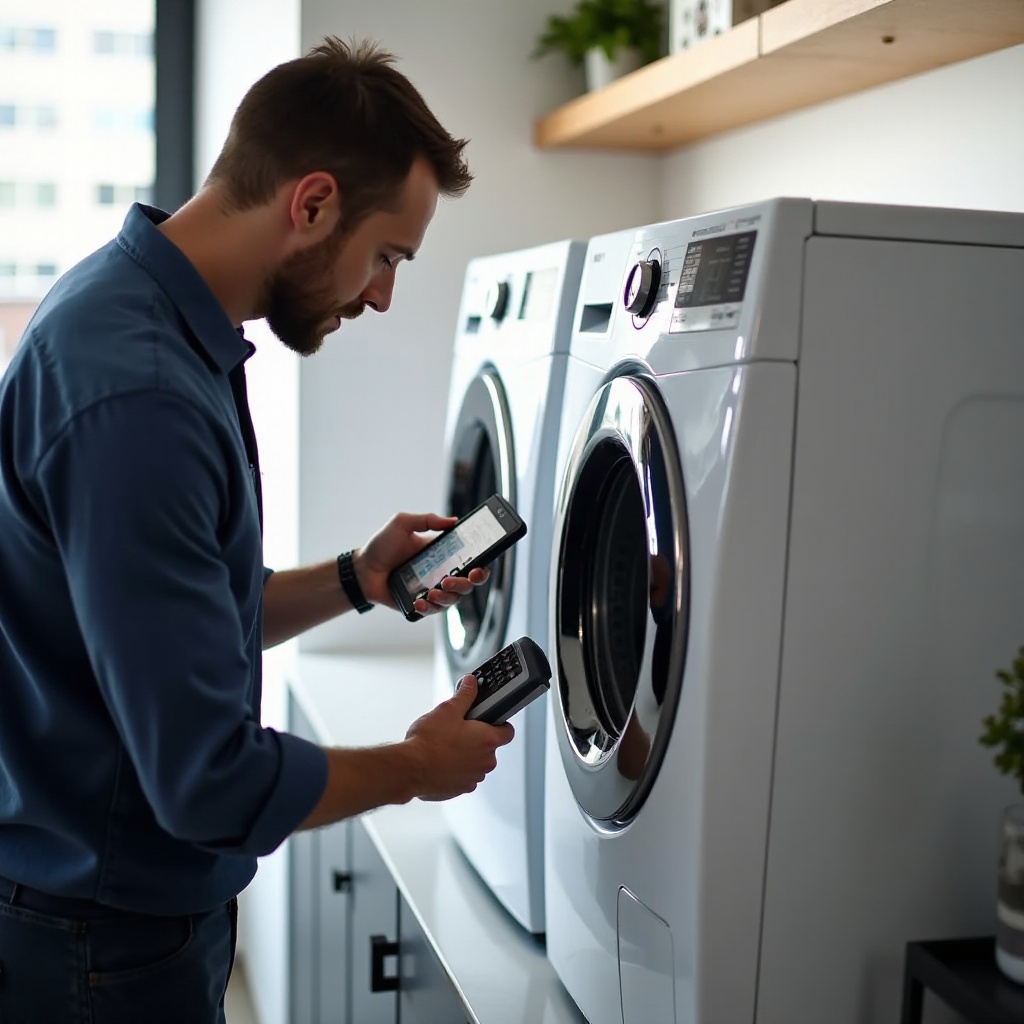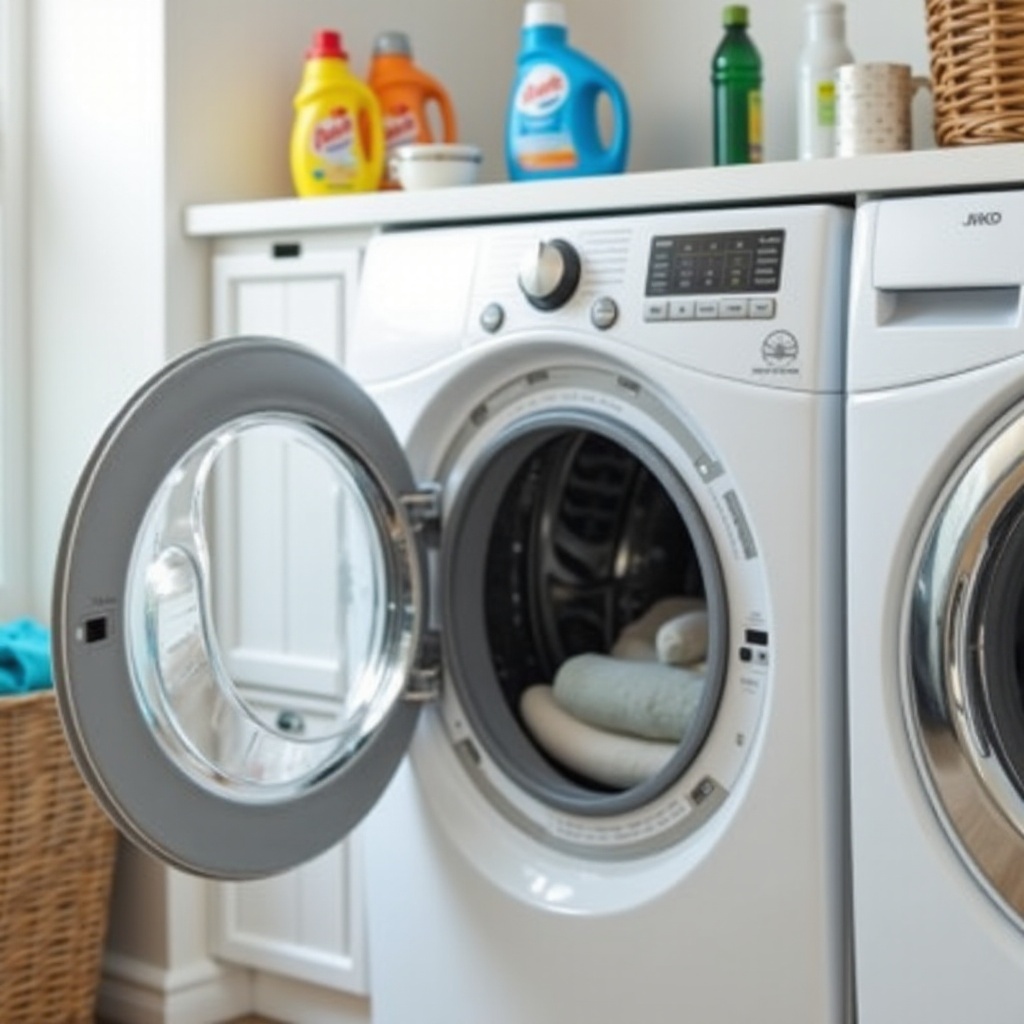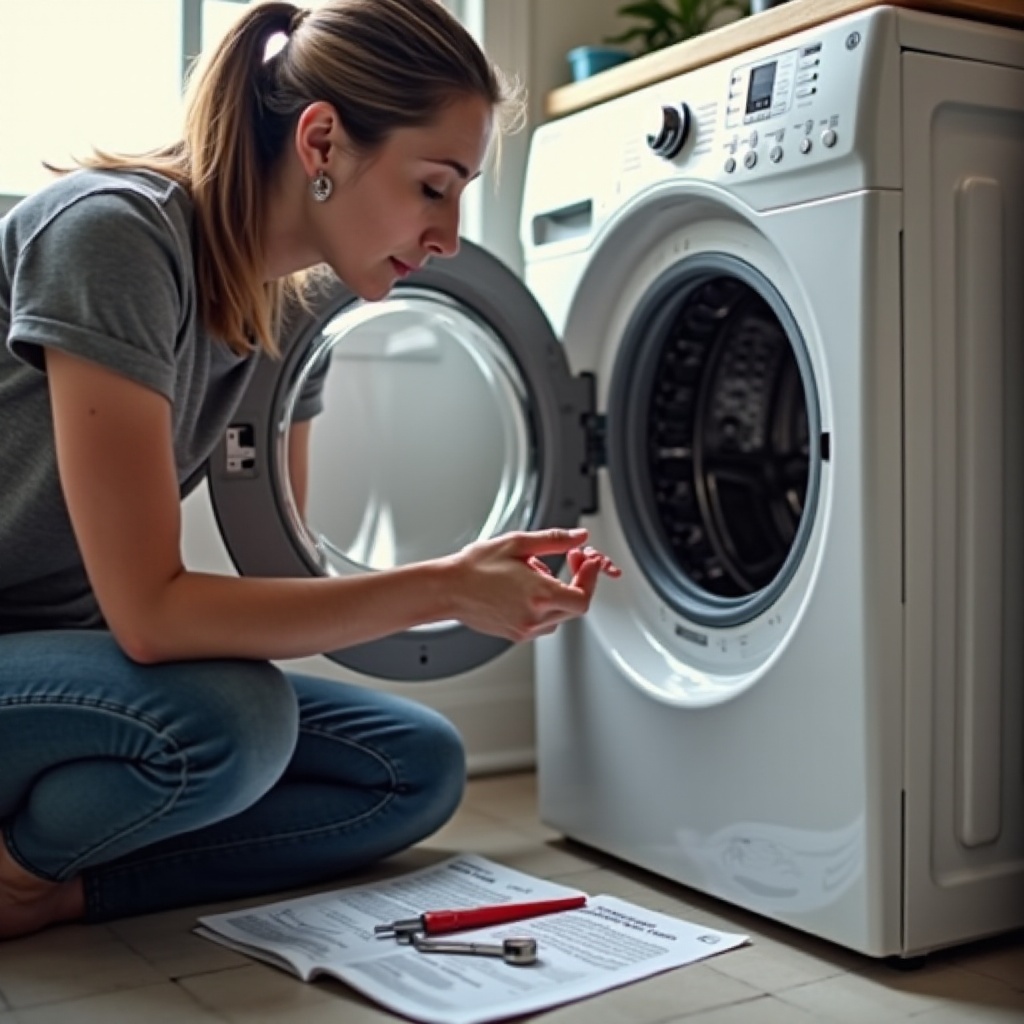Introduction
Whirlpool washers are known for their reliability and advanced features, making them a popular choice for households. However, like any appliance, they can experience issues that may disrupt your laundry routine. Understanding these common problems and knowing how to address them can save you time and money. This guide will walk you through the most frequent issues with Whirlpool washers and provide solutions to get your appliance back in working order.

Common Whirlpool Washer Issues
Knowing the common problems that can occur with Whirlpool washers helps you diagnose and fix the issues efficiently. Let's look at some of the most frequent complaints.
Washer Not Starting
This is a common issue that can be caused by several factors, such as problems with the power supply, faulty door latch or switch, or issues with the control board. To troubleshoot:1. Check if the washer is properly plugged in and the outlet is working.2. Ensure the door is fully closed and the latch is engaged.3. Reset the washer by unplugging it for a few minutes and then plugging it back in.
Water Leakage Problems
Water leakage can result from worn-out door seals, loose hoses, or cracks in the washer drum. Here are some steps to address this:1. Inspect the door seal and replace it if it shows signs of wear.2. Tighten any loose hose connections.3. Check the drum for cracks and consult a professional if needed.
Washer Not Draining Properly
If your washer is not draining, the issue might be a clogged drain hose, pump filter, or pump itself. To troubleshoot:1. Check and remove any blockages from the drain hose.2. Clean the pump filter, typically found at the bottom front of the washer.3. If the problem persists, inspect the pump for damage and consider replacing it.
Maintaining awareness of these common issues is the first step in ensuring your Whirlpool washer operates smoothly. Next, let's dive deeper into the troubleshooting process.

Troubleshooting Guide
Addressing the problems outlined above requires a systematic approach. Let's expand on the troubleshooting steps for each concern.
Fixing the Washer Not Starting Issue
- Check Power Supply: Ensure the washer is connected to a working outlet. Test the outlet with another device to confirm it is functional.
- Inspect Door Latch: If the door latch is not engaging, the washer will not start. Ensure the door is fully closed and listen for the latch click. If faulty, replace the latch.
- Reset the Washer: Unplug the washer for a few minutes and then reconnect. This can reset the control board and resolve minor glitches.
Solutions for Water Leakage
- Examine Door Seal: Over time, door seals can wear out, causing leaks. Inspect for cracks or deformities and replace if necessary.
- Secure Hose Connections: Check all hose connections for tightness. Loose connections can cause leaks during the wash cycle.
- Inspect Washer Drum: Look for any visible cracks in the drum. If found, a professional repair may be required to prevent further leakage.
Unclogging Drains and Filters
- Clear Drain Hose: Detach the drain hose and check for clogs. Use a long brush or wire to remove any blockages.
- Clean Pump Filter: Locate the pump filter at the bottom front of the washer. Remove any debris that may be obstructing the filter.
- Inspect Pump: If the washer still doesn't drain, the pump may be damaged. Inspect the pump for any signs of wear or damage and consider replacement.
With these troubleshooting steps, many common issues can be addressed efficiently. However, unusual noises during operation can also indicate underlying problems that need to be tackled.

Addressing Unusual Noises
Whirlpool washers should operate quietly, so unusual noises during the wash cycle can be alarming. Identifying and resolving these issues is crucial for maintaining the appliance's performance.
Identifying the Source of the Noise
- Grinding Noise: This can indicate an issue with the drive motor, belt, or pulley. Inspect these components for signs of wear or damage.
- Rattling Noise: Loose objects like coins or buttons could be trapped in the drum or pump. Remove any foreign objects before running another cycle.
- Thumping Noise: Imbalanced loads can cause the washer to thump during operation. Ensure clothes are distributed evenly in the drum.
Noise Reduction Solutions
- Check for Loose Hardware: Tighten any loose screws or bolts that may be causing vibration noise.
- Adjust Washer Feet: Ensure the washer is level by adjusting the feet. An unlevel washer can vibrate excessively and create noise.
- Perform Regular Maintenance: Keep the washer drum and other moving parts clean and well-maintained to prevent noise caused by buildup or wear.
By addressing unusual noises, you can ensure your Whirlpool washer operates smoothly and quietly. Now, let's explore preventative maintenance tips to avoid common issues in the future.
Preventative Maintenance Tips
Preventative maintenance is key to extending the life of your Whirlpool washer and avoiding frequent problems. Here are some tips to keep your appliance in top condition.
Regular Cleaning Routines
- Clean the Drum: Run a cleaning cycle with an appropriate washer cleaner to remove any buildup.
- Wipe Down Seals: Regularly wipe down door seals to prevent mold and mildew.
- Clean the Filters: Clean the pump and inlet filters periodically to maintain optimal water flow.
Best Practices to Avoid Common Issues
- Avoid Overloading: Follow the manufacturer's recommended load sizes to prevent strain on the washer's motor and drum.
- Use the Right Detergent: Use high-efficiency (HE) detergent to prevent excessive sudsing and potential damage to the washer.
- Inspect Hoses Regularly: Check hoses for signs of wear and replace them every three to five years to prevent leaks.
Knowing When to Call a Professional
- Complex Repairs: If you encounter issues that require disassembling the washer or involve electrical components, it's best to consult a professional.
- Persistent Problems: If problems persist despite troubleshooting efforts, a professional technician can diagnose and fix the issue efficiently.
- Routine Servicing: Schedule regular maintenance checks with a professional to keep your washer in optimal condition.
By following these preventative maintenance tips, you can minimize common problems and ensure your Whirlpool washer runs efficiently.
Conclusion
Maintaining a Whirlpool washer involves understanding common problems, knowing how to troubleshoot effectively, and performing regular maintenance. By addressing issues such as starting problems, water leakage, draining issues, and unusual noises promptly, you can extend the life of your appliance and enjoy hassle-free laundry days. Preventative care and knowing when to call in a professional will keep your washer in top shape.
Frequently Asked Questions
What should I do if my Whirlpool washer won’t start?
Start by checking the power supply to ensure the washer is properly connected to a working outlet. Next, inspect the door latch to make sure it is fully engaged. If necessary, reset the washer by unplugging it for a few minutes and then plugging it back in.
How can I prevent water leakage in my Whirlpool washer?
To prevent water leakage, regularly inspect and replace worn-out door seals, tighten loose hose connections, and check the washer drum for any cracks. Performing these checks and maintenance regularly can help avoid leaks.
What’s the best way to maintain my Whirlpool washer?
Maintain your Whirlpool washer by following regular cleaning routines, such as running a cleaning cycle, wiping down seals, and cleaning filters. Avoid overloading the washer, use the right detergent, and inspect hoses regularly to keep your appliance running smoothly.
